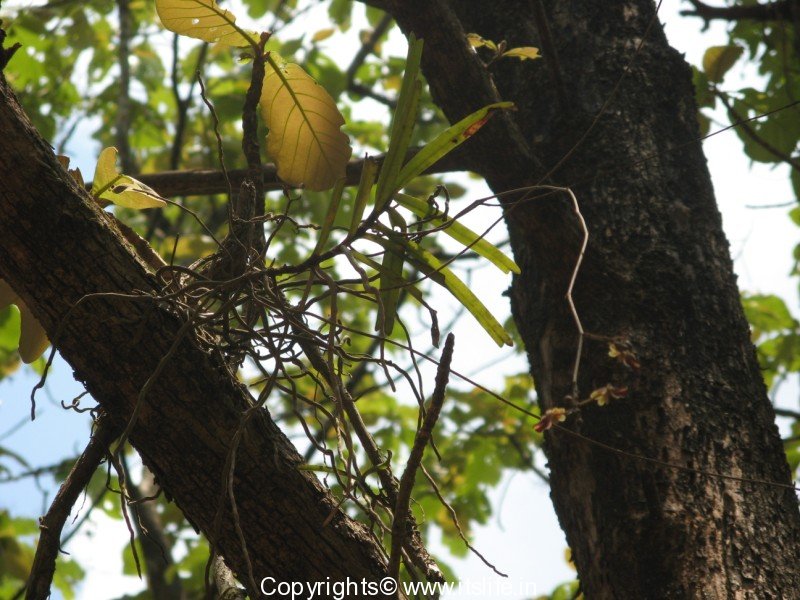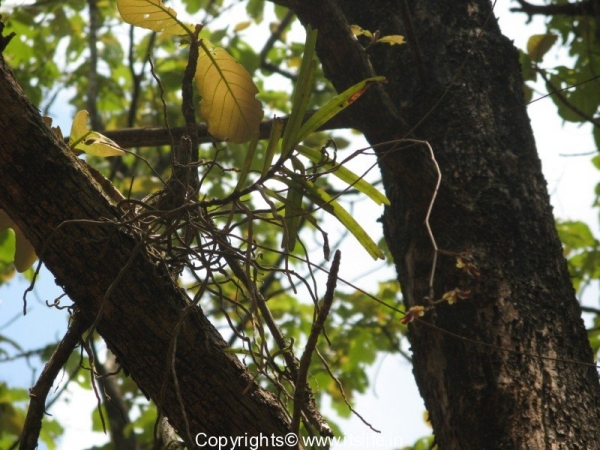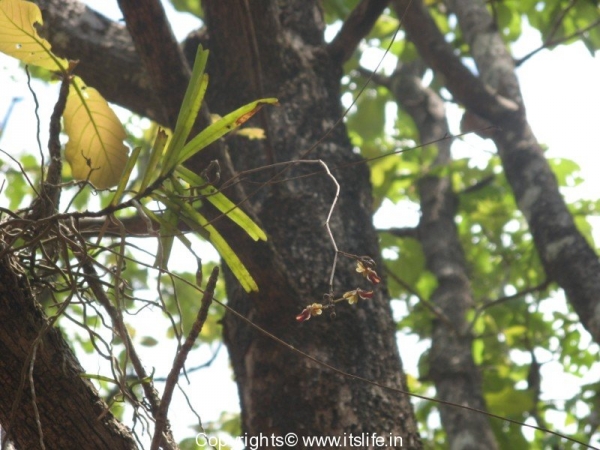As we drove below a huge tree branch in Bhadra Wildlife Sanctuary, I caught a glimpse of an orchid plant with tiny flowers at the end of the spike hanging downwards. My joy knew no bounds for spotting yet another wild orchid in bloom in the wild.
Not heeding to the protests from my husband and son I was below the branch in a flash with the camera. I had a tough time taking the picture as the sun rays were streaming right on to the lens. I identified this orchid as Cottonia Penducularis also known as Bee Orchid from the picture book compiled by T Anand Rao, whom I refer to as the father of Orchids of Western Ghats. I am thrilled to be able to share this Orchid with you dear readers.
Plant Summary:
Cottonia Penducularis is the single species (monotypic genus) of the orchid family, Orchidaceae. The common name of this orchid is Bharmari in Marathi and Bee Orchid. Bee orchid because the lip of the orchid resembles the back of the bee and the other petals, look like the wings. When in full bloom it looks like a bee flying. The male bees are attracted to this flower, which helps in pollination.
The plant is an epiphyte with aerial roots and without flowers it would have been impossible for me to identify. The stem is long and the leaves are bilobed and opposite to one another. The flowers are clustered at the tip of the branched spike. The spike can be almost 2 feet in length and because of the weight of the flowers will bend down.
The sepals and petals are rust colored with red veins. Lip is 3 lobed, shiny and the mid lobe is dark purple looks almost blackish-brown from far. These orchids bloom from March to August when the humidity is at its highest. These orchids are natives of semi-evergreen to moist deciduous forests of the Western Ghats in South-West of India.
Check more pictures here – http://presam77.blogspot.com




